Recently, whilst in the garden, I came across the caterpillar on the photo below: a beautiful white one with black dots. Obviously I am very curious what beautiful butterfly or moth it will grow into. Although I have already studied butterflies and moths quite a bit, the caterpillar stage is an area that still requires a lot of my attention. As did it this time. In cases such as this one, I like to be assisted by the ObsIdentify app on my smartphone for a first indication. Of course this is followed by looking up the “outcome” to check if it is correct. Because those apps are not infallible.
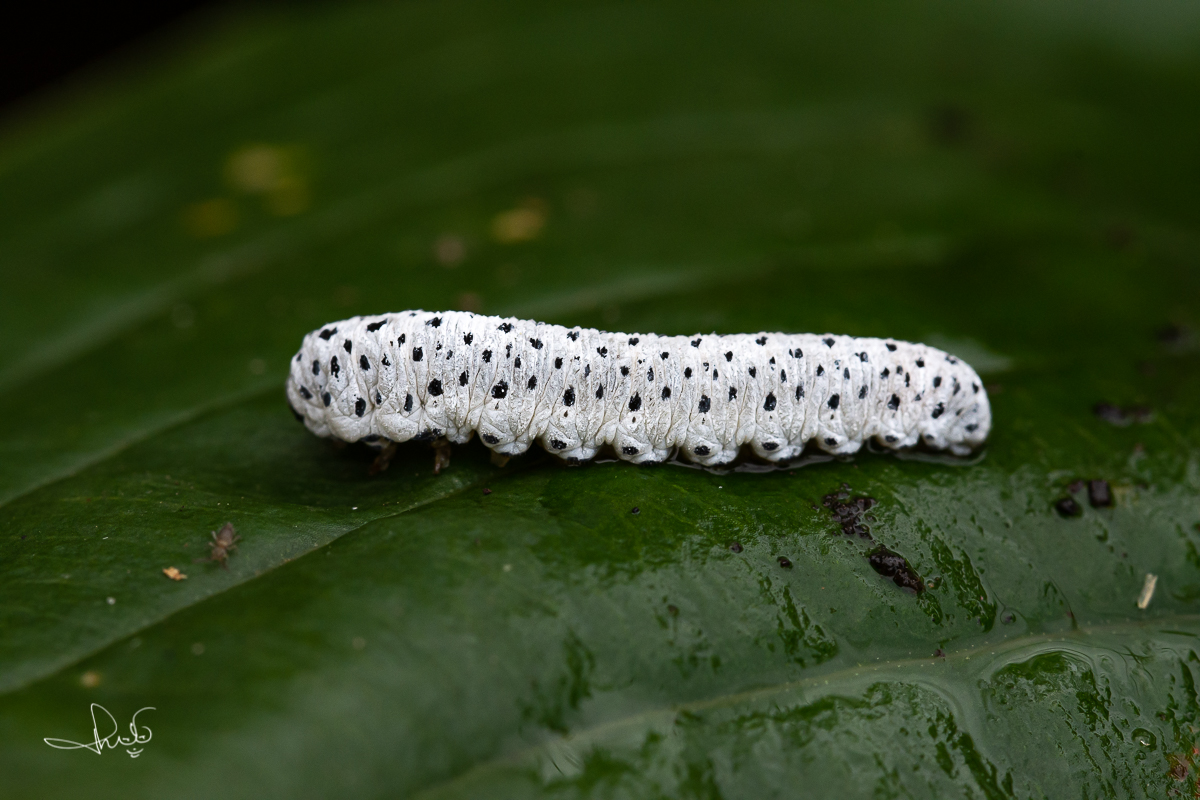
Prolegs
Now, if I had studied this caterpillar more carefully, I could already have seen that there was something special about this one. I only saw it when I looked at a close-up photo but this creature had way too many legs for a caterpillar! A caterpillar has only three pairs of so-called true legs and a maximum of four pairs of so-called abdominal prolegs. The latter number varies from species to species, as some have no abdominal prolegs at all. (There are even species that has no legs at all, the Limacodidae, with one representative in the Netherlands, the festoon (Apoda limacodes).) At the end of a caterpillar’s abdomen there is often also one or more pairs of so-called anal prolegs or anal claspers. The prolegs and claspers are built slightly differently from the true legs and serve to support the body, but the caterpillar can also grab onto something with them. Caterpillars therefore only move by means of the true legs. The image below (from the Dutch Butterfly Conservation and edited by me) shows the parts of a caterpillar and the different legs.
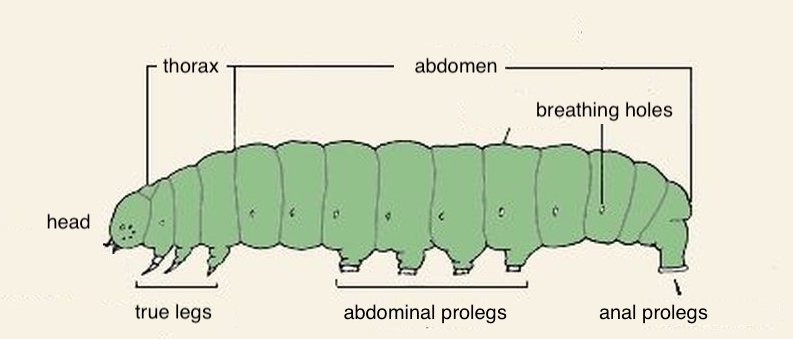
Sawflies
In the enlarged and illuminated detail photo below you can see that there are three true legs, but that they are immediately followed by a row of abdominal prolegs. That also reminded me that it couldn’t be a caterpillar. Because there are always at least two segments between the true legs and the prolegs. So, what was this ‘caterpillar’ in my garden?
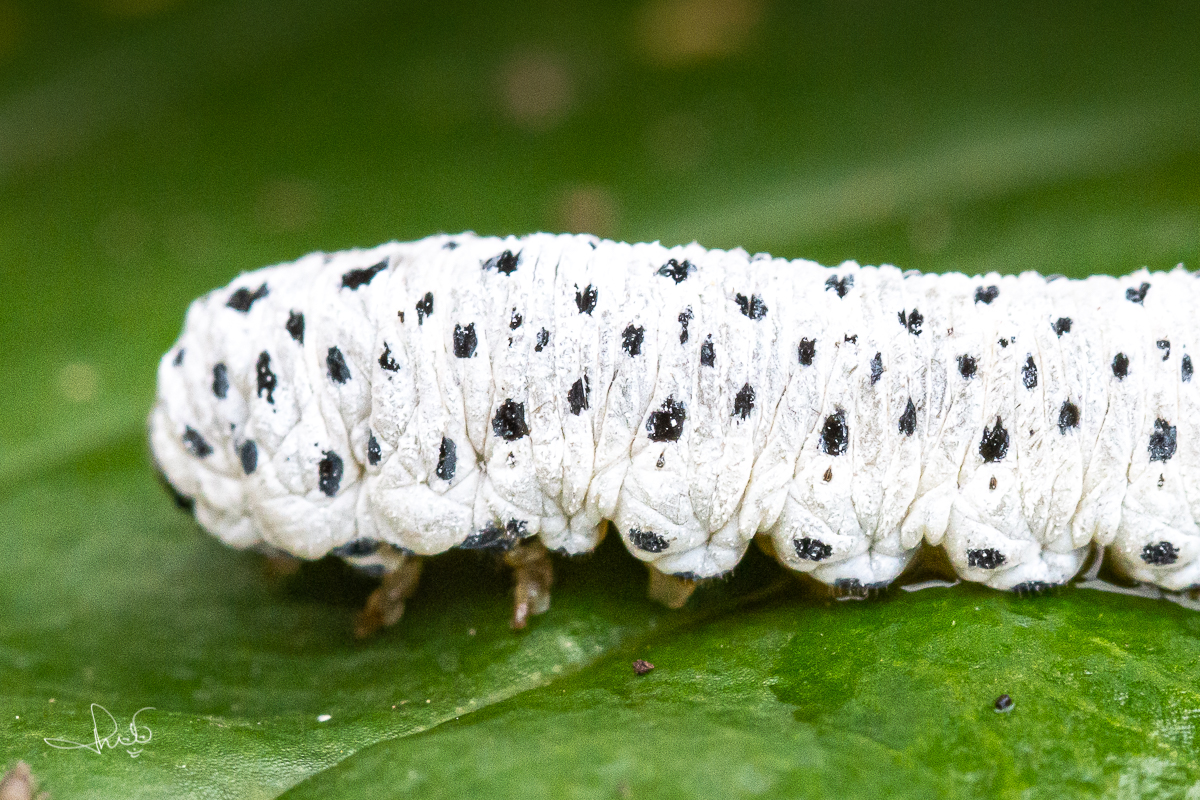
It was a larva of the figwort sawfly (Tenthredo scrophulariae, also called Allantus scrophulariae), one of many species of sawflies. In the Netherlands these species are called sawwasps or leafwasps. This name immediately evokes associations with the common or lemonade wasp (Vespula vulgaris). However, there is no immediate relationship. This does not go beyond the fact that they both belong to the order of the Hymenoptera. The common wasp belongs to the Apocrita suborder, which is characterized by the wasp waist. The sawflies do not have a wasp waist and belong to a different suborder, namely the Symphyta. Unlike many wasps in the Apocrita suborder, sawflies do not have a stinger. Why are they called wasps in the Netherlands? Because of the black and yellow striped abdomen, something that characterises many types of sawflies.
Segments
Of course a caterpillar is also just a larva, the first phase of life of many insects (and some other animals). But in butterflies and moths we call the larva a caterpillar and the larvae of flies we call maggots. So sawfly larvae closely resemble butterfly caterpillars and you have to look very closely to see the difference. First of all, the number of prolegs as I mentioned above. In addition, the “space” between the true and prolegs. Although this is not always clearly visible, the abdomen of a caterpillar consists of a number of connected segments. The caterpillar has at least two segments without legs between the true legs and prolegs. There are also some legless segments between the prolegs and anal prolegs.
Ribbed abdomen
Sawfly larvae consists of segments but the individual segments are generally hardly visible and they often have a somewhat ribbed abdomen. And there is only one or sometimes no legless segment between the true legs and abdominal prolegs. This is clearly visible in the photo below. It is the larva of the Allantus viennensis, also a sawfly. You might think you are dealing with a caterpillar, but more than four pairs of abdominal prolegs are visible and there is only one legless segment between the true legs and prolegs.
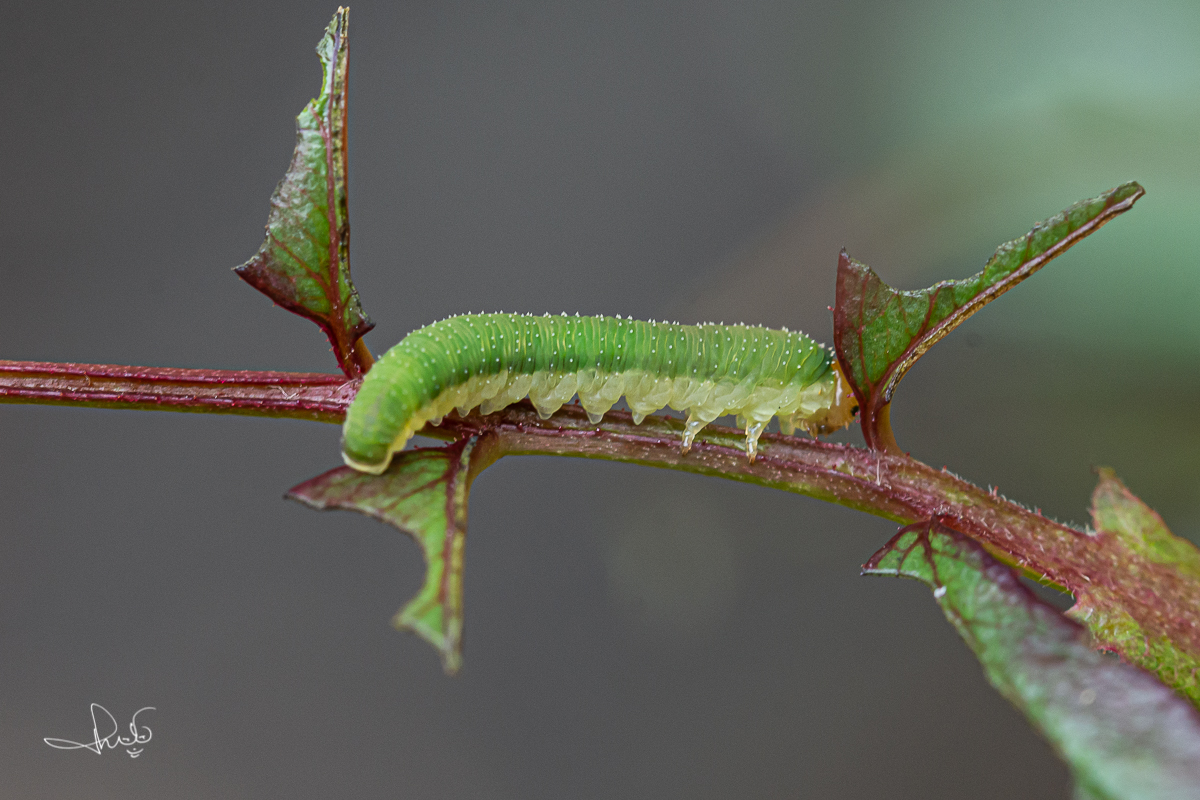
Convex head
And I have one more, a photo below that I recently got from one of my loyal followers, Martin Westerbaan. He found this caterpillar and was curious as to what it was. And you probably guessed it, this is also a sawfly larva, Cimbex connatus to be precise, which belongs to the Cimbicidae family.
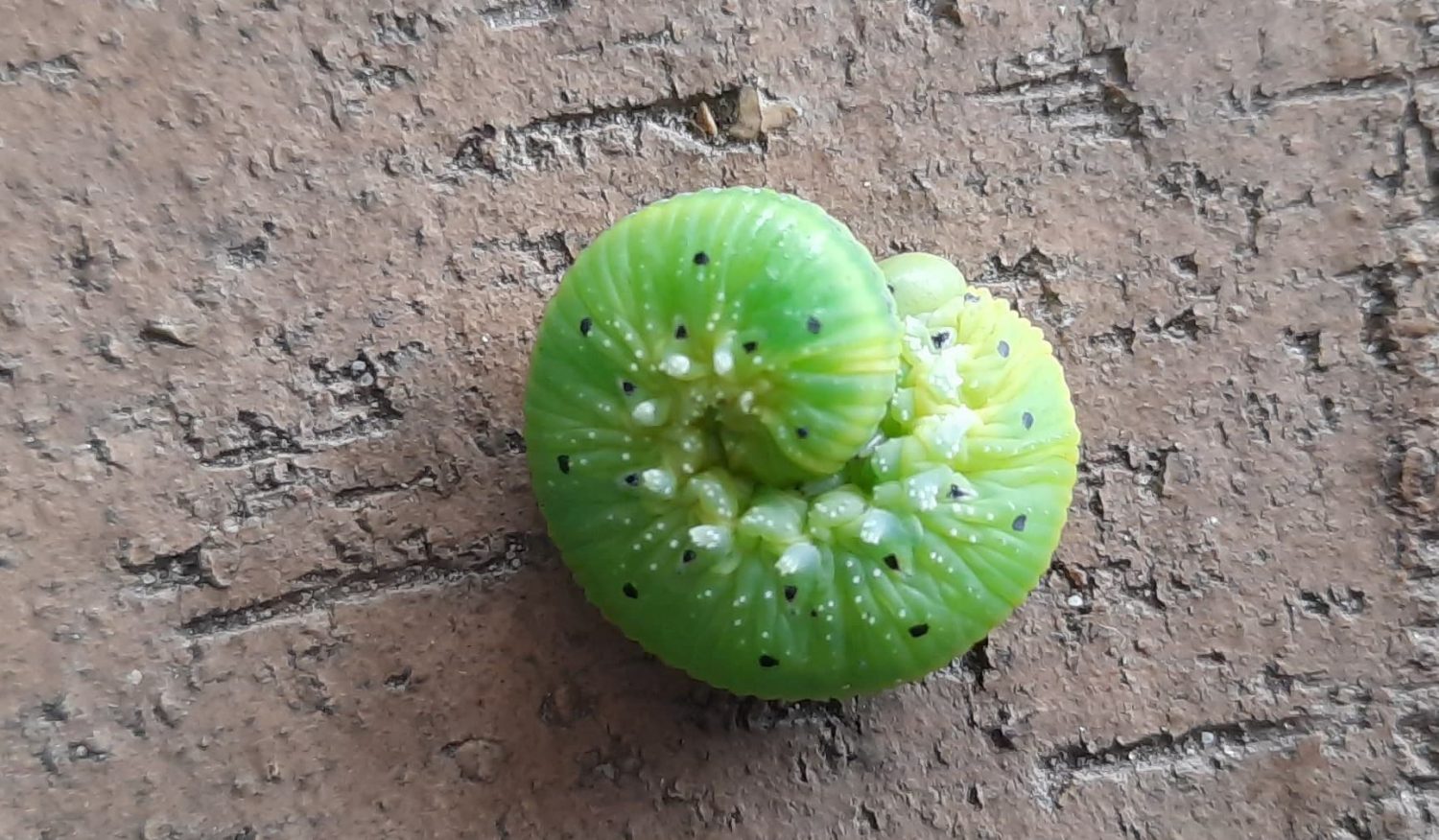
Finally, I came across the following animals on a Scots pine in Sellingen in the southeast of the province of Groningen last May. The branches were full of them and they feasted on the pine needles. These are also sawfly larvae, of the red pine sawfly (Neodiprion sertifer) to be precise. These larvae are able to eat an entire pine tree bare. This photo shows another nice characteristic of sawfly larvae, namely the convex head. In the pictures above of the Cimbex connatus and the Allantus viennensis, this characteristic convex head is also visible, albeit a bit more unclear than this one.
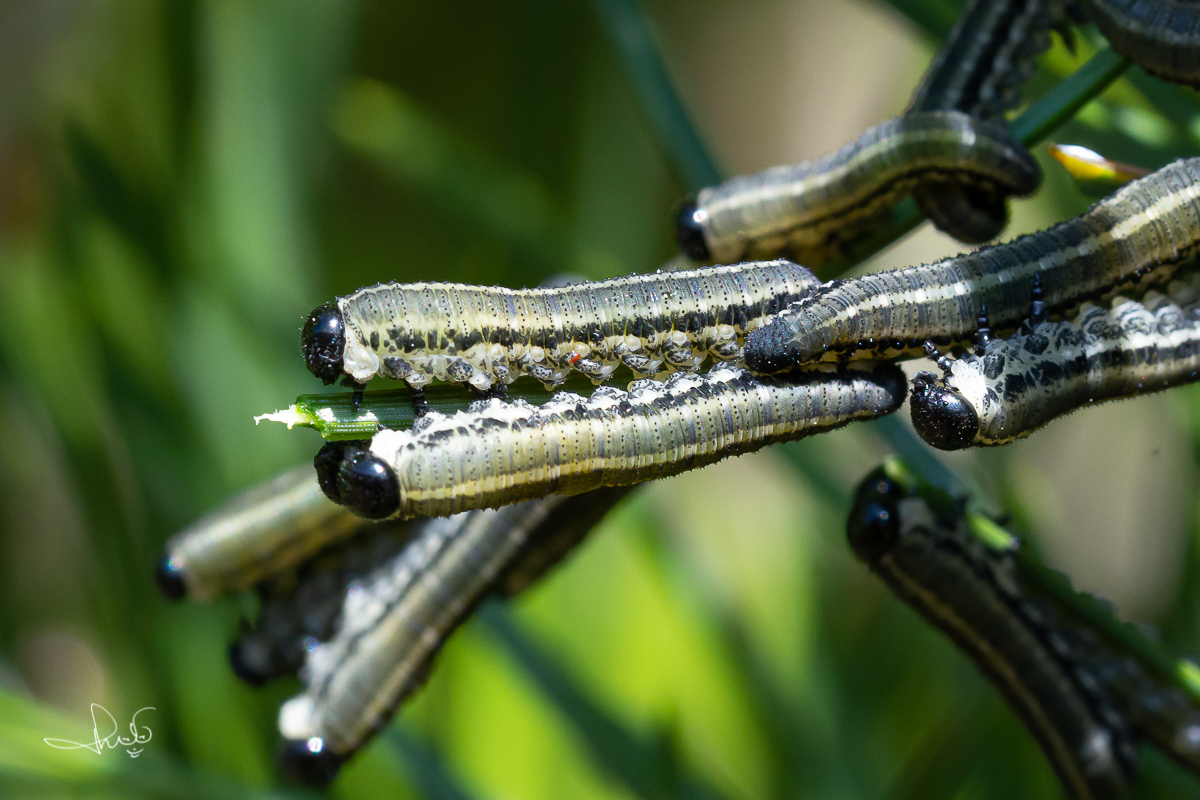
Differences
Finally, some examples to clearly see the differences with caterpillars. Coincidentally, all from moths. I already wrote that in some caterpillars the prolegs are completely missing. An example of this is the mottled umber (Erannis defoliaria) in the photo below. The three pairs of true legs are very visible and also the anal prolegs. There are no further abdominal prolegs in between. This is very characteristic of a large group of moths, the so-called loopers or spanworms (Geometridae). It moves in a specific way. It clasps with its front legs and draws up the hind end, then clasps with the anal prolegs and reaches out for a new front attachment. And then this cycle repeats itself.

Another example is the caterpillar of the cinnabar moth (Tyria jacobaeae). In this – greatly enlarged – photo, the segmentation is clearly visible by the black bands. In addition, if you look closely, you will see a true leg, then two legless segments and then the four segments with the abdominal prolegs.
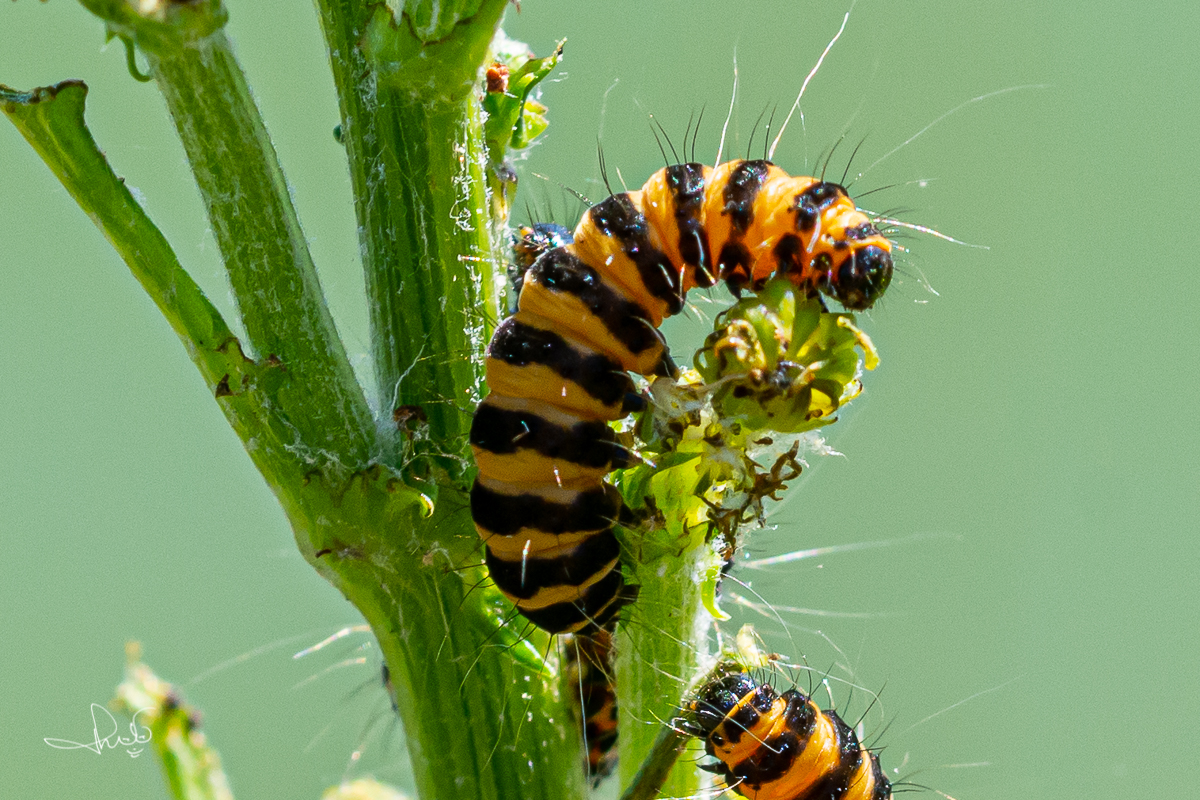
Elephant caterpillar
Finally, the so called elephant caterpillar, the very characteristic caterpillar of the elephant hawk-moth (Deilephila elpenor). Not only are the four pairs of prolegs clearly visible as dark dots under its fat body. You can also see a very small pointed end at the end. Very characteristic of members of the hawk-moth family (Sphingidae), which, in addition to the elephant hawk-moth, also includes the poplar hawk-moth (Laothoe populi), bedstraw hawk-moth (Hyles gallii) and of course the hummingbird hawk-moth (Macroglossum stellatarum).
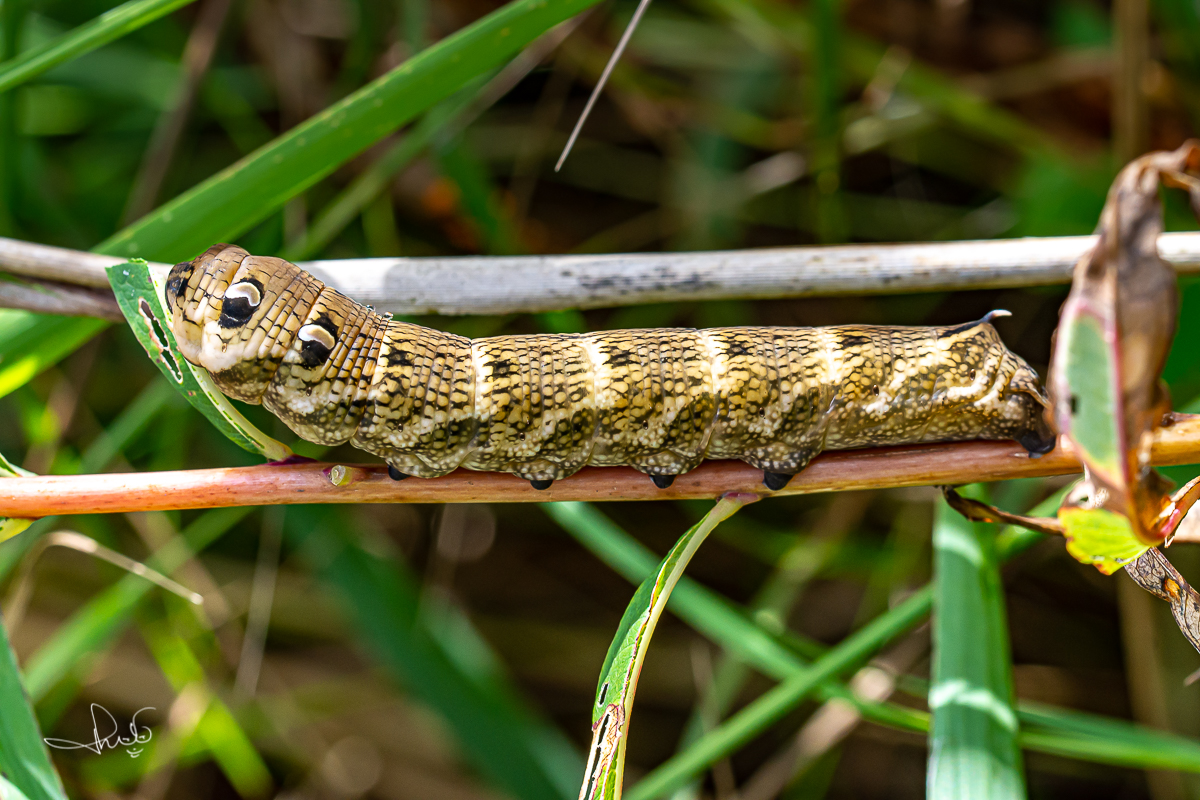
So next time you see something that looks like a caterpillar: watch the head (convex), try to count the prolegs and pay attention to the space between the true and prolegs. It remains difficult, especially because there is a choice of nearly 2500 species of butterflies and moths and the more than 500 species of sawflies that you can encounter in the Netherlands!



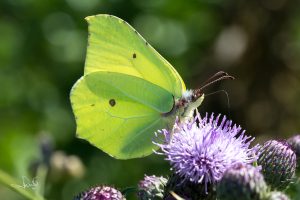
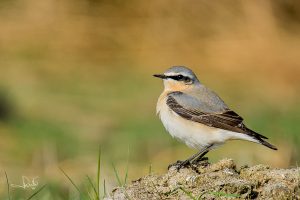
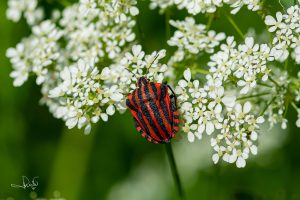
This is wonderful. So helpful. Thank you so much.
Best wishes to you from Sue in England.
Thanks Sue!😊